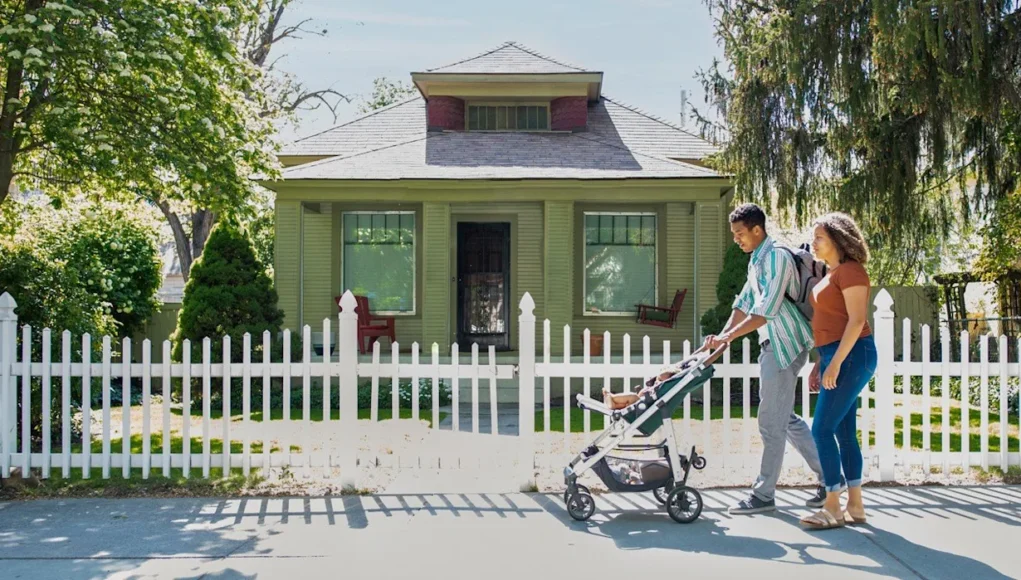The American dream was built around a timeline: Get married, buy a home, start a family. But that timeline is breaking down.
Today, Americans are waiting longer or opting out entirely: Fewer marriages, fewer babies, delayed moves. And behind it all, a housing market that increasingly seems like it was built for a different time. That’s why some experts are warning that the next big stress test for housing might not be affordability—but fertility.
Politicians and pundits have begun sounding the alarm about America’s declining birth rate, framing it as an existential threat to the economy, social safety nets, and the future of the country itself. To fix it, they’re calling on young Americans to start families and invoking a familiar, almost mythic era as the model: the baby boom…
The baby boom blueprint that shaped U.S. housing
When Americans talk about ideal housing patterns, they’re often referencing a very specific moment in history: the post-World War II baby boom. During that period, household formation surged alongside population growth, giving rise to a generation of young families, newly built homes, and widespread homeownership. It was the birth of the starter home as we know it—a modest, affordable house for a growing family.
“GI Joe and Rosie the Riveter got together right after World War II, got married, and births exploded,” explains James Hughes, a population and housing expert at Rutgers University. “So we had rapid household formation.”
That boom in household creation was closely tied to rapid housing production and policy support…
“What we have a lot of today: double income, no kids. … They’re certainly delaying it if they’re going to have children,” says Hughes. “But some are questioning whether they are ever going to have children.”
So what happens when an entire generation delays family formation long enough that the replacement rate slips out of reach—and with it, the demand that’s propped up the housing market for decades?
The future buyer: Older, fewer, different needs
When life milestones are delayed, so is household formation, and that ripple effect can reshape the entire housing market.
One of the clearest signs of this shift is in who’s renting. Right now, 72% of U.S. renters are aged 30 or older—an all-time high, according to John Burns Research & Consulting. It reflects a shift in typical homebuying age and, by extension, a significant change in the timing of household formation.
The reasons for this delay are both structural and economic.
“Expensive housing makes it very, very difficult, particularly for single people, to leave their parents’ house and rent an apartment,” says Hughes, the population and housing expert at Rutgers. Facing high housing costs and limited inventory, young adults are staying home longer, waiting longer to rent, and pushing off buying altogether…
What happens when household growth slows?
While America’s youth population has already peaked and is projected to decline by 2.4 million over the next decade, housing experts still expect to see steady demand in the near term. But the long-term picture looks very different.
Net household growth has slowed for the second year in a row, according to research from Harvard Joint Center for Housing Studies. In 2024, the U.S. added just 1.56 million households, down from 1.61 million in 2023. As of early 2025, that number has slowed even further to an annualized pace of 1.26 million. That’s a steep drop from the 1.93 million annual average seen between 2019 and 2022.
This slowdown is unfolding at a moment of rising uncertainty across all major drivers of household formation: employment rates, income growth, immigration, and demographics. Perhaps most critically, the immigration surge that helped sustain population growth in recent years came to an end in early 2025.
And the demographic headwinds are only intensifying. Beginning this year, the baby boomer generation will begin turning 80, ushering in a period where rising mortality rates might begin to overshadow the formation of new households. Without a surge in immigration, Elliott estimates we could begin to see more births than deaths in the U.S. as early as 2029.
Hughes agrees: “If there is no immigration, eventually the population and number of households are going to contract.”
One thing is certain: The fastest-growing housing segment will be older adults. That raises major questions about whether today’s housing supply and the homes we’re building will match what tomorrow’s population will need.
And these shifts aren’t playing out uniformly.
“You also have regional differentials,” says Hughes. “The Northeast and the Midwest regions are the demographic laggards [compared with] the South and the West … who have been the recipients of migration.”
Can builders keep up with the shift?
With later household formation, shrinking family sizes, and slowing population growth, housing demand is evolving—and builders, developers, and policymakers will need to evolve with it.
“Housing, I think, in terms of facing contraction, is still pretty far off,” says Hughes. But while demand might hold, it will likely be for a different kind of housing entirely.
Buyers aren’t vanishing—they’re showing up later, older, and with different needs. The challenge, then, isn’t just to build more homes; it’s to build the right homes for a slower-growth, later-blooming America.








